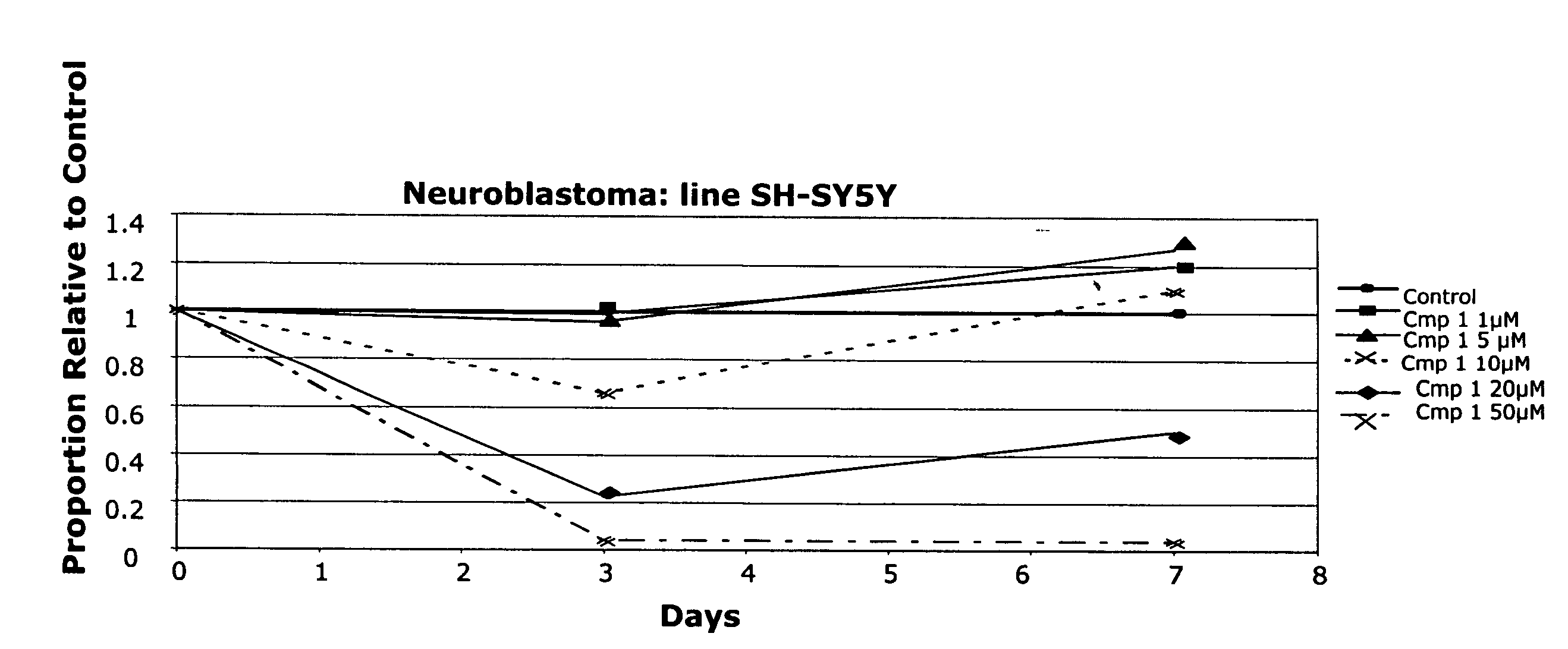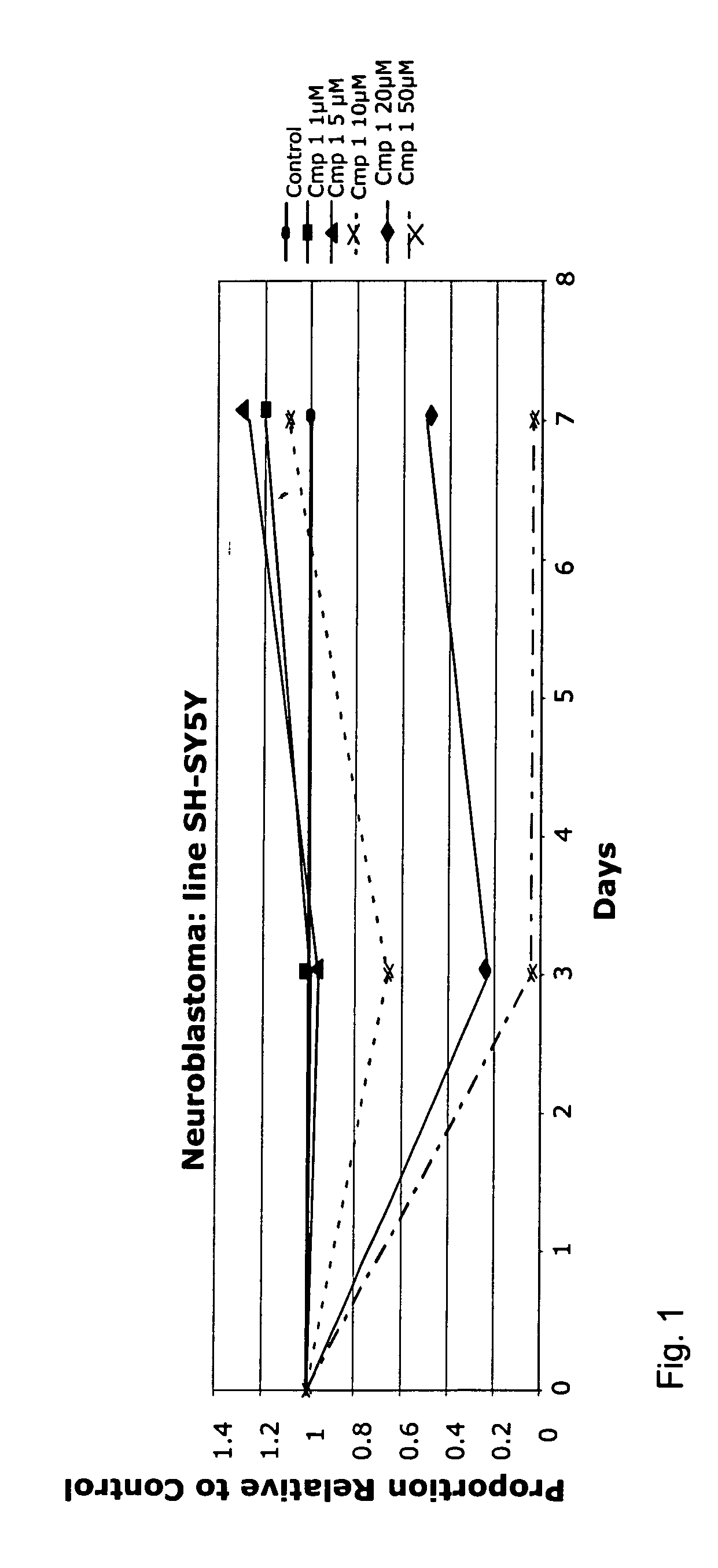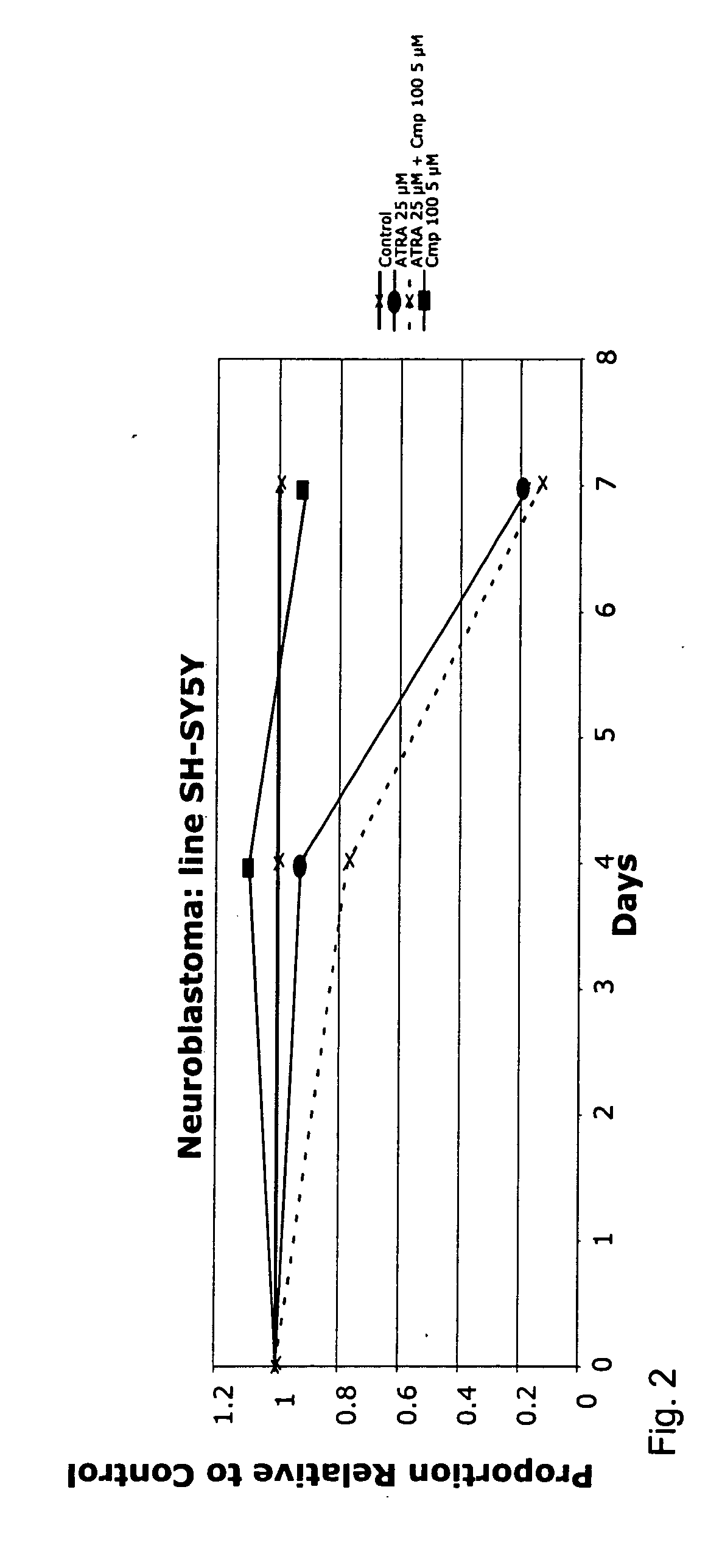Use of phosphatases to treat neuroblastomas and medulloblastomas
a phosphatase and neuroblastoma technology, applied in the direction of biocide, drug composition, peptide/protein ingredients, etc., can solve the problems of neuroblastoma and medulloblastoma being some of the most lethal, cancer continues to plague people of all ages, and remaining survivors experience significant toxicities
- Summary
- Abstract
- Description
- Claims
- Application Information
AI Technical Summary
Benefits of technology
Problems solved by technology
Method used
Image
Examples
example 1
Effect of Cantharidin Analogs on SH-SY5Y Cells
[0059]The cantharidin homolog that was evaluated was the Compound 100, which was obtained from Lixte Biotechnology Holdings, Inc., 248 Route 25A, No. 2, East Setauket, N.Y., which has the structure:
[0060]Another cantharidin homolog that was evaluated was the compound Compound 102, which was obtained from Lixte Biotechnology Holdings, Inc., 248 Route 25A, No. 2, East Setauket, N.Y., which has the structure:
In Vitro Experiments:
[0061]The neuroblastoma cell line, SHSY5Y, was exposed to the cantharidin analog Compound 100 for 4 or 7 days at concentrations of 1, 5, 10, 20 and 50 μM. At the two lower doses, 1 μM and 5 μM, there was little or no inhibition of cell proliferation at day 4 and enhanced cell growth by day 7 as compared to cells exposed to vehicle (media) alone (FIG. 1.) Dose dependent inhibition was observed at day 4 at the three higher doses with escape of growth inhibition for doses less than 50 μM by day 7. At low doses, Compoun...
example 2
Effect of Cantharidin Analogs on DAOY Cells
[0066]The medulloblastoma cell line, DAOY, was exposed to the cantharidin analog, Compound 100 at concentrations of 1 μM, 5 μM and 20 μM and evaluated for cellular proliferation over the course of three days. DAOY cells treated with vehicle only (media) exhibited no change in cellular proliferation while the DAOY cells treated with Compound 100 all had decreased rates of cellular proliferation as compared to the control, with the cells treated with 20 μM Compound 100 exhibiting the greatest decrease in cellular proliferation (FIG. 4, squares). Therefore, Compound 100 even at low concentration is capable of preventing cellular proliferation.
[0067]It is also demonstrated the Compound 100 and Compound 102 both inhibit the proliferation of DAOY cells when implanted subcutaneously in SCID mice (FIG. 7).
[0068]Recent studies have reported that treating DAOY cells with varying concentration of all-trans retinoic acid (ATRA) inhibits cellular prolif...
example 3
Effect of HDAC Inhibitors on DAOY Cells
[0069]The HDAC inhibitor that was evaluated was the Compound 205, which was obtained from Lixte Biotechnology Holdings, Inc., 248 Route 25A, No. 2, East Setauket, N.Y., which has the structure:
[0070]The medulloblastoma cell line, DAOY, was exposed to the HDAC inhibitor, Compound 205 at 10 μM, ATRA at 50 μM, and the compound 205 at 10 μM combined with ATRA at 50 μM, and evaluated for cellular proliferation over the course of seven days. DAOY cells treated with vehicle only (media) exhibited no change in cellular proliferation while the DAOY cells treated with Compound 205 alone and ATRA alone all had decreased rates of cellular proliferation as compared to the control. DAOY cells treated with compound 205 in combination with ATRA, however, had a marked decrease in the rate of cellular proliferation. (FIG. 8) Therefore, we have shown that Compound 205 is active against medulloblastoma cell line DAOY. We have also shown the Compound 205 in combina...
PUM
| Property | Measurement | Unit |
|---|---|---|
| concentrations | aaaaa | aaaaa |
| size | aaaaa | aaaaa |
| solubility | aaaaa | aaaaa |
Abstract
Description
Claims
Application Information
 Login to View More
Login to View More - R&D
- Intellectual Property
- Life Sciences
- Materials
- Tech Scout
- Unparalleled Data Quality
- Higher Quality Content
- 60% Fewer Hallucinations
Browse by: Latest US Patents, China's latest patents, Technical Efficacy Thesaurus, Application Domain, Technology Topic, Popular Technical Reports.
© 2025 PatSnap. All rights reserved.Legal|Privacy policy|Modern Slavery Act Transparency Statement|Sitemap|About US| Contact US: help@patsnap.com



